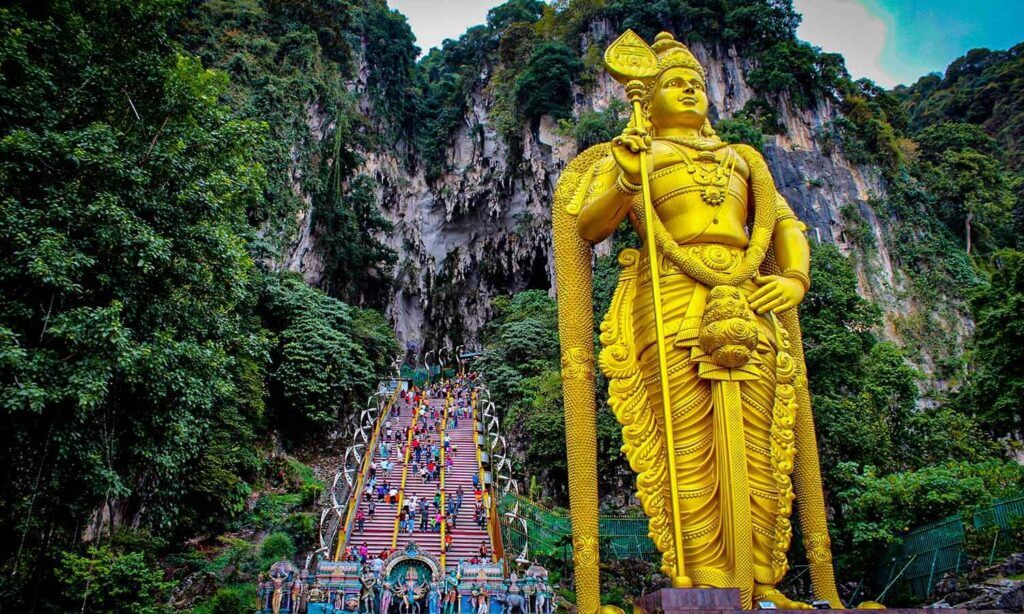Malaysia ماليزيا
About Malaysia

Malaysia is a beautiful and diverse country with many highlights. The many different regions, each with its characteristic features, make this country the perfect destination for tourists. However, Malaysia does not entirely depend on tourism. This country's economy has been going strong for years. Contrary to what some people (still) believe, Malaysia is not a third-world country. The country has developed itself enormously in the past 50 years and this is clearly noticeable when visiting it. Especially in Malaysia's capital, Kuala Lumpur, you will see many modern buildings, a modern light rail transit system, many luxurious shopping malls, and countless expensive cars on the roads. Life outside of the capital is often less developed, but even there the times of people only being able to afford a motorcycle are long gone.
In the last few years, Malaysia has become ever more popular for tourists. This is partly due to positive PR (by the government and by websites like this one), but also because flying to the other side of the world is becoming more and more affordable. Malaysia is a perfect country to visit for all types of tourists. It is a great destination for backpackers, groups, couples, and families with children.
Now and then new attractions are discovered in Malaysia; existing attractions are upgraded or renovated regularly. Accommodation in Malaysia is often very affordable compared to neighboring countries; though prices have risen in the last few years it is still reasonably cheap.
Malaysia is a tropical holiday destination, where temperatures fluctuate between 25 and 35 degrees during the year. It is usually very hot and humid, especially in the major cities. Often due to haze, warm air is trapped inside the cities, which results in very warm temperatures. It is less hot on the many islands surrounding Malaysia, mainly due to the cool breezes. It is also less hot in the 'highlands' of Malaysia; here you can enjoy cooler temperatures that never exceed 25 degrees.

Below is a list of facts and other details about Malaysia.
- The Federation of Malaysia comprises Peninsular Malaysia and the states of Sabah and Sarawak on Borneo.
- Malaysia is located between 2º and 7º north of the Equator; Peninsular Malaysia is separated from the states of Sabah and Sarawak by the South China Sea. To the north of Peninsular Malaysia is Thailand while its southern neighbor is Singapore. Sabah and Sarawak are north of Indonesia in Borneo while Sarawak also shares a border with Brunei.
- Malaysia is 330.803 sq km in size.
- The current population (2017) of Malaysia is roughly 31,164
- Kuala Lumpur is the capital city of Malaysia.
- Malays who make up about 50.4% of the population are the predominant group with Chinese (23.7%), Indians (7.1%), and other ethnic groups making up the rest.
- Bahasa Melayu (Malay) is the national language but English is widely spoken, especially by the youth. The ethnic groups also speak various languages and dialects.
- Islam is the official religion but all other religions are freely practiced.
- Malaysia is governed by a parliamentary democracy with a bicameral legislative system. The Head of State is the King (Muhammad V of Kelantan) since 2016, a position that is awarded to a different State Monarch every five years and the Head of Government is the Prime Minister.
- Malaysia has a tropical climate with warm and humid weather all year round. Temperatures in the lowlands range from 21ºC (70ºF) to 32ºC (90ºF). The highlands are cooler, where temperatures range between 15°C (59° F) to 25°C (77°F).
- Major public holidays in Malaysia are New Year's Day, Federal Territory Day, Chinese New Year, Labour Day, King's Birthday, National Day, Deepavali, Hari Raya Aidilfitri, and Christmas.
- Manufacturing constitutes the largest single component of Malaysia's economy. Tourism and primary commodities such as petroleum, palm oil, natural rubber, and timber are other major contributors to the economy.
- The unit of currency is the Malaysian ringgit indicated as RM. Foreign currency can be converted at banks and money changers. ATMs can be found throughout the whole country.
- Time difference: +8 GMT (+16 Pacific Standard Time).
- Voltage is 220 - 240 volts AC at 50 cycles per second. Standard 3-pin square plugs and sockets (UK plugs, US and other Europeans should bring along an adaptor).
- Malaysia has a worldwide supported GSM network, which means you can use your phone without any problems. US citizens should bring along a tri-band phone in order for it to work in Malaysia. When calling within Malaysia, you'd best buy a prepaid card. When calling outside of Malaysia, use a prepaid SIM or Scratch card.
Average Climate in Kuala Lumpur, MalaysiaJANFEBMRCAPRMAYJUNJULYAUGSEPOCTNOVDECTemp.MAX C°323333333333323232323232MIN C°222223232322232323232323SunHRS687667766555RainMM158201259292223130100163218250258190
| Languages Spoken اللغة | Bahasa Melayu (Malay)/Malaysian |
|---|---|
| Currency العملة | MR - Malaysian Ringgit |
| Area (km2) 2المساحةكم | 330.803 |
| Country Name اسم الدولة | Malaysia |
| Capital العاصمة | Kuala Lumpur |
| Population السكان | 32,950.000 |















